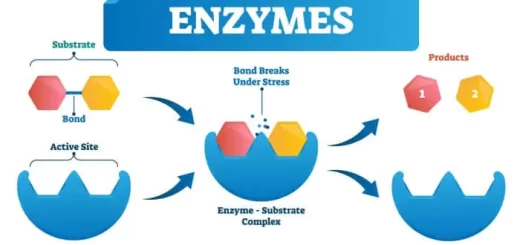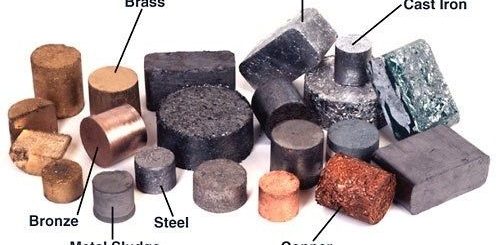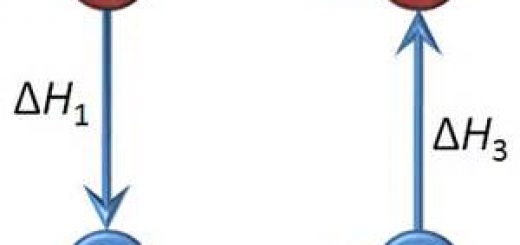Haber-Bosch’s method, The most famous elements in 5A group (Nitrogen properties, Preparation & compounds)
Nitrogen is considered as the most famous element in 5A group, Nitrogen gas is collected during its preparation by downward displacement of water because nitrogen gas is lighter than the water and sparingly soluble in it and nitrogen is collected over mercury surface to get dried.
Preparation of nitrogen gas in the lab
From the atmospheric air: Nitrogen can be prepared from the atmosphere air, by removing of carbon dioxide, water vapour, oxygen gas, The atmospheric air is passed through sodium hydroxide solution, To remove carbon dioxide gas.
2NaOH (aq) + CO2 (g) → H2O (l) + Na2CO3 (aq) sodium carbonate
Then it is passed through conc. sulphuric acid, To absorb water vapor, Finally it is passed over red hot copper turnings, To remove oxygen gas, Nitrogen is collected over mercury surface to get dried.
2Cu ( s ) + O2 ( g ) → 2CuO ( s ) copper oxide
From the chemical compounds: By dropping sodium nitrate solution slowly on ammonium chloride solution with heating, Nitrogen gas is collected during its preparation by downward displacement of water, because nitrogen gas is lighter than water and sparingly soluble in it.
NaNO2 (aq) + NH4Cl (aq) → NaCl (aq) + 2H2O (l) + N2 (g)
The properties of nitrogen
Physical properties
- Colorless, odorless and tasteless gas.
- It is lighter than air because air contains oxygen gas (32 g/mol) which is heavier than nitrogen gas (28 g/mol).
- It is sparingly soluble in water [23 ml (N2)/ L (H2O) at STP].
- It has a neutral effect on litmus paper.
- Its density is (1.25 g/L at STP).
- Its boiling point is (−159.79° C), it can be liquified at this temperature at normal atmospheric pressure.
Chemical properties
The reactions of nitrogen gas with the other elements occur in the presence of an electric spark (550° C) or an electric arc (3000° C) or by strong heating, Because of the difficulty of breaking the triple bond between the two nitrogen atoms in one molecule of it.
The reaction of nitrogen with the other elements
The reaction of nitrogen with Hydrogen (H2): In the presence of an electric spark (550° C), ammonia gas (NH3) is formed.
N2 (g) + 3H2 (g) → 2NH3 (g) ammonia
The reaction of nitrogen with oxygen: In the presence of an electric arc (3000° C), nitric oxide (NO) gas is formed which is instantly changing into (oxidized) nitrogen dioxide (NO2).
N2 (g) + O2 (g) → 2NO (g) nitric oxide
Then, 2NO (g) + O2 (g) → 2NO2 (g) nitric dioxide
The reaction of nitrogen with metals: At high temperature, nitrogen reacts with metals like magnesium giving the metal nitride which easily decomposes in water and ammonia gas evolves.
3Mg (s) + N2 (g) → Mg3N2 (s) magnesium nitride
Mg3N2 (s) + 6H2O (l) → 3Mg(OH)2 (aq) + 2NH3 (g) ↑
The reaction of nitrogen with calcium carbide (CaC2): In the presence of the electric arc (3000° C), calcium cyanamide (CaCN2) is formed which is used as a fertilizer.
CaC2 (s) + N2 (g) → CaCN2 (s) + C (s)
Calcium cyanamide is used as a fertilizer because it reacts with water and produces ammonia gas in the agricultural soil when the land is being irrigated.
CaCN2 (s) + 3H2O (l) → CaCO3 (s) + 2NH3 (g) ↑ ammonia
The most famous nitrogenous compounds
The most famous nitrogenous compounds are Ammonia gas NH3, Nitric acid HNO3.
Ammonia gas NH3
Preparation of ammonia in the lab
Put in the flask, a mixture of ammonium chloride NH4Cl and calcium hydroxide (slaked lime) Ca (OH)2, Put a drying agent (quicklime CaO) in the U-shaped tube, Heat the contents of the flask, then collect the ammonia gas by downward displacement of air.
2 NH4Cl (s) + Ca(OH)2 (s) → CaCl2 (s) + 2H2O (v) + 2NH3 (g) ↑
Ammonia gas is collected by downward displacement of air, Because it is lighter than air, Conc. sulphuric acid is not used in drying ammonia gas when it is prepared in the lab, Because it reacts with ammonia gas, producing ammonium sulphate.
Preparation of ammonia gas in the industry (Haber-Bosch’s method)
The scientists Haber-Bosch had reached a method to prepare ammonia gas in the industry from nitrogen and hydrogen, in the presence of a catalyst (iron, molybdenum), under 200 atmospheric pressure and 500° C.
N2 (g) + 3H2 (g) → 2NH3 (g)
The properties of ammonia gas
- Colorless gas with a characteristic pungent smell.
- It does not burn readily or sustain combustion, where the glowing splint is extinguished when approached to it.
- It is highly soluble in water forming an alkaline solution (ammonium hydroxide), it turns to blue color by adding a few drops of litmus solution to it, as shown in the following fountain experiment.
Fountain experiment
The lower flask is filled with an acidified aqueous solution added to it a few drops of litmus solution, So, the color of the solution becomes red, The upper flask is filled with ammonia gas, Blow a stream of air to the lower flask.
Observation:
- Rushing out the red solution from the lower flask to the upper flask in the form of a fountain.
- Changing the color of the red solution once it is rushed out in the upper flask into blue color.
Conclusion:
- Rushing out the solution of the lower flask in a form of a fountain is an indication that ammonia is highly soluble in water.
- Changing the color of the red solution into blue is an indication for the formation of a solution which has an alkaline effect on litmus solution (ammonium hydroxide).
NH3 ( g ) + H2O ( l ) → NH4OH ( aq ) ammonium hydroxide
Ammonia gas is considered as a base anhydride because it reacts with water forming ammonium hydroxide (a weak base).
Detection of ammonia gas
Ammonia gas forms dense white fumes of ammonium chloride (solid substances that sublimate) when subjected to a glass rod wetted with conc. hydrochloric acid, Sublimation is the change of the matter from a solid state to a gaseous state directly without changing into a liquid state.
NH3 (g) + HCl (g) → NH4Cl (s) ammonium chloride
The role of ammonium in the manufacture of fertilizers
Nitrogen is present in soil in the form of inorganic & organic substances, it is considered one of the main sources of nutrition in plant, Because it is an essential element to form protein, However, the amount of nitrogen in the soil decreases by time, so, the soil should be enriched by nitrogen either by adding Synthetic nitrogenous fertilizers or natural fertilizers (manure).
Although nitrogen forms about 4/5 of the air volume, plant can’t use it by a direct way in its gaseous form, Accordingly, it must provide the soil by nitrogen in the form of ammonium salts or urea which dissolve in the irrigation water, where they absorbed by the plant roots, Ammonia is considered the essential starting material for manufacturing most of the nitrogenous fertilizers & nitrogenous phosphorus fertilizers.
Nitrogenous fertilizers
The inorganic nitrogenous fertilizers (ammonium salts) are synthesized by a neutralization reaction between ammonia and the suitable acid.
Some of the important inorganic nitrogenous fertilizers:
Ammonium nitrate fertilizers: preparing a method by reacting ammonia with nitric acid.
NH3 (g) + HNO3 (l) → NH4NO3 (aq) ammonium nitrate
Properties: It has a high nitrogen content (35 %), It is highly soluble in water, Using an excess amount of it, causes an acidic effect on the soil.
Ammonium sulphate fertilizers: preparing a method by reacting ammonia with sulphuric acid.
2NH3 ( g ) + H2SO4 ( aq ) → ( NH4)2SO4 ( aq ) ammonium sulphate
Properties: The continuous use of it, causes an increase in the acidity of the soil, thus it is important to neutralize the soil by basic substances.
The slaked lime is added to the soil which provides with ammonium sulphate fertilizers, To neutralize the soil, as ammonium sulphate acts to increase the soil acidity.
Nitrogenous phosphorus fertilizers:
They are prepared by reacting ammonia with phosphoric acid.
3NH3 (g) + H3PO4 (aq) → ( NH4)3PO4 (aq) ammonium phosphate
Nitrogenous phosphorus fertilizers (Ammonium phosphate) is an important fertilizer because it provides the soil with two essential elements which are nitrogen and phosphorus.
Notes of some common fertilizers
Urea fertilizer: It has high nitrogen content (46%), It is the most suitable fertilizer for hot areas because the high temperature increases its dissociation to ammonia and carbon dioxide.
Anhydrous liquified ammonia fertilizer (future fertilizer): It has the highest nitrogen content overall fertilizers (82 %), it is supplied to the soil in a depth of nearly 12 cm.
Nitric acid properties, Passivity phenomenon & Economic importance of the 5A group elements



